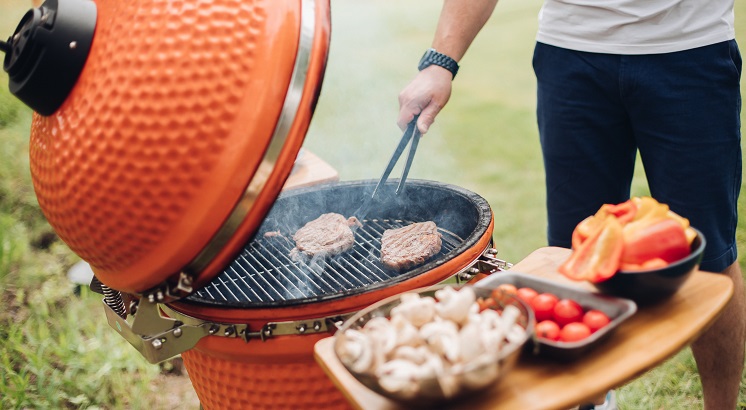Picnic and pool season is upon us, which means plenty of opportunities for outdoor dining with family and friends.
It’s important, however, to take precautions when enjoying food in the summer heat, as rising temperatures accelerate the growth of bacteria on food and surfaces. To protect everyone around you and avoid foodborne illnesses this summer, follow these simple steps to ensure the food you consume is safe to eat:
Keep everything clean
Just as you would not use dirty surfaces or utensils in your kitchen, don’t use them at the picnic table. An important step in food safety is making sure that any implements that touch food (including cutting boards, knives and plates) are sanitized before use. After returning home, thoroughly clean items before storing them. Plates and utensils are not the only items to keep clean. “Remember to sanitize your hands as well,” says Mindy Athas, R.D.N., C.S.O., L.D.N., an outpatient dietitian nutritionist at the Tevis Center for Wellness. “Even if you don’t have running water, you should be using hand sanitizer in between touching foods.”
Keep your food at the proper temperature
When outside in the heat, foods such as chicken, fish and even vegetables can spoil much faster. “Keep your cold foods cold and your hot foods hot,” Athas recommends. “Use a food thermometer to make sure you are keeping your foods at the proper temperature. It’s the best way to make sure your food is safe.” While many foods have specific internal temperatures that signify when they are cooked, a good rule of thumb is to keep cold foods below 40 degrees Fahrenheit and hot foods above 140 degrees Fahrenheit.
Bacteria grow much faster on foods that have been sitting in high heat. “This is a huge cause of food poisoning,” says Athas. Make sure to keep coolers shut, and if food has been sitting outside without ice for more than an hour, it’s time to toss it.
Avoid cross contamination
While it’s often easier to pack light for a picnic or a day by the pool, it’s important to make sure you separate raw and cooked foods. “You need to have a separate cooler for raw and ready-to-eat foods,” says Athas, “What people tend to do is throw together their burgers and their drinks, and that is really setting you up for cross contamination.” Using the same utensils is another common mistake. Make sure to bring separate sets of plates and tongs to use before and after meat has been cooked. Once raw meat has touched the plate, it should be sanitized before the plate is used again, and a new plate should be used for cooked items.
See a healthcare provider
Foodborne illnesses can present as quickly as 30 minutes following consumption and up to six weeks after eating contaminated food. Most people experience symptoms within one to three days. Typically, foodborne illnesses are marked by diarrhea and vomiting. If symptoms are present for more than 24 hours, contact your healthcare provider.
